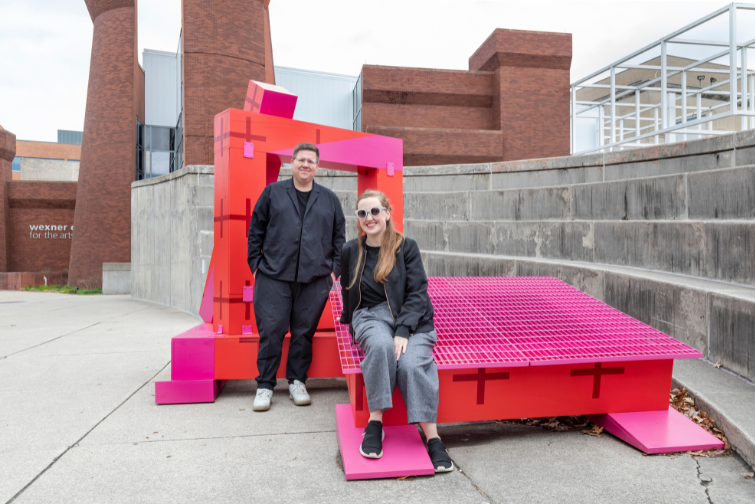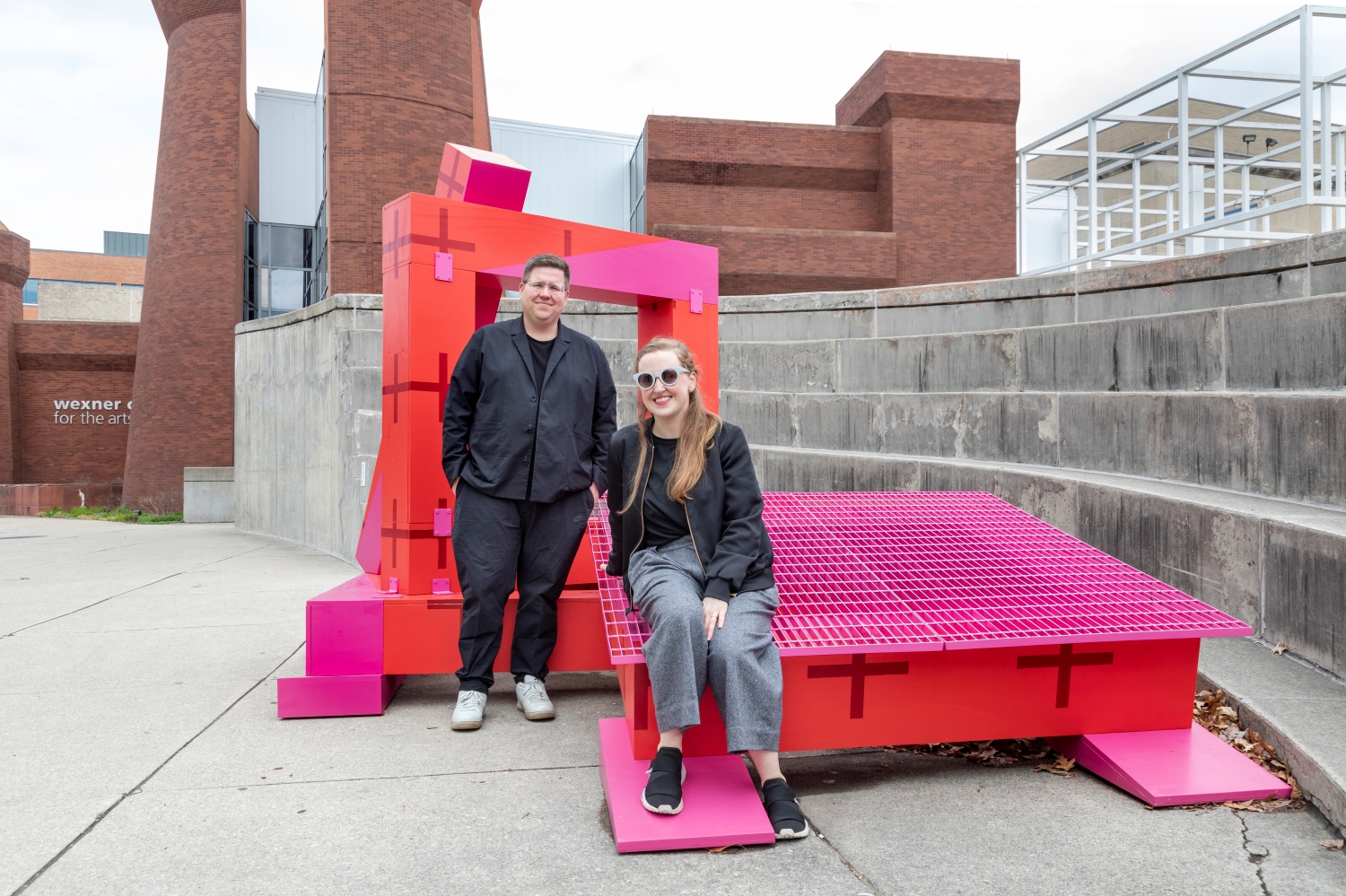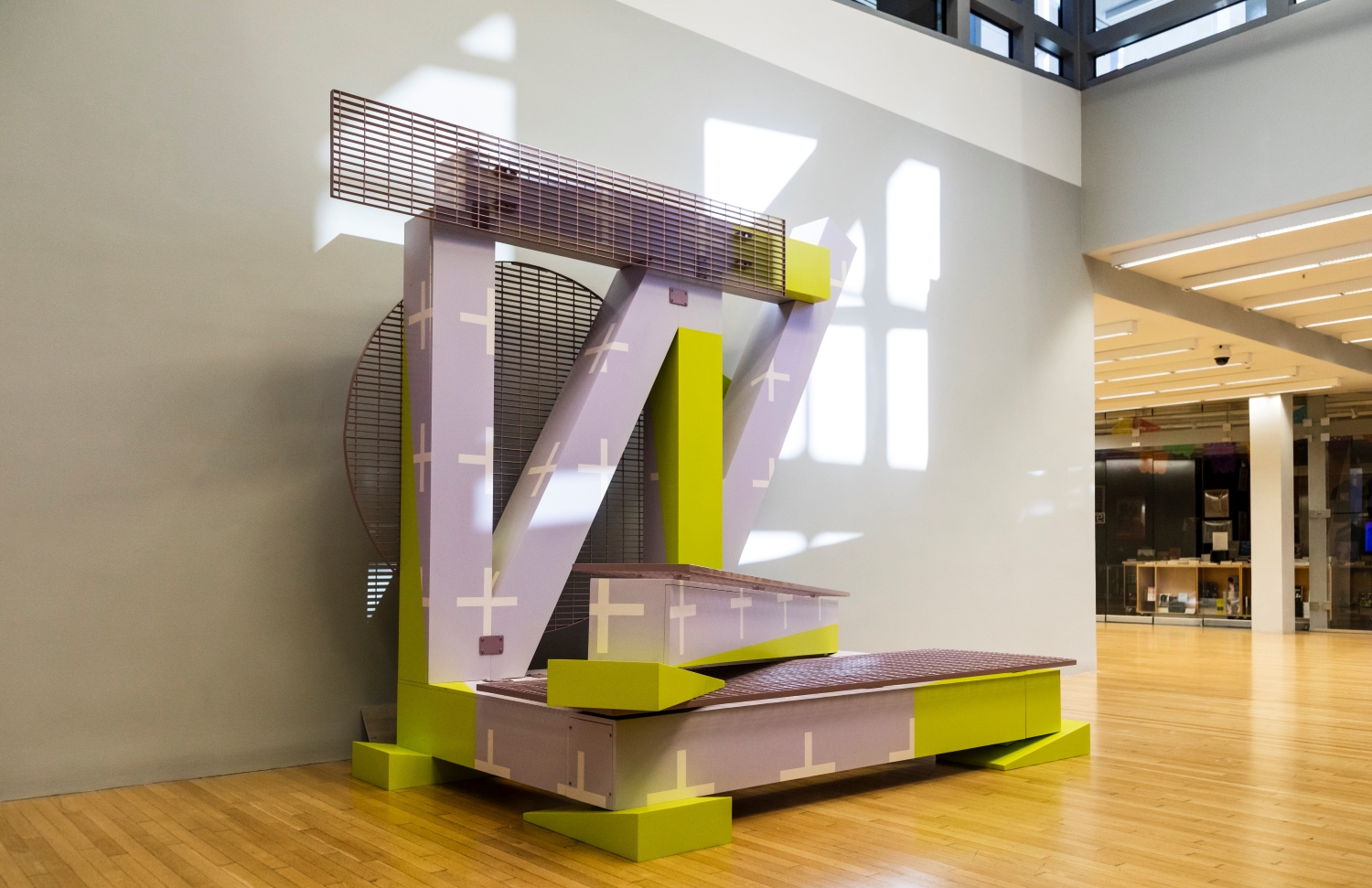Outpost Office Invites You to Broaden Your View of Architecture

 By Melissa Starker, creative content and PR manager for the Wexner Center for the Arts
By Melissa Starker, creative content and PR manager for the Wexner Center for the Arts
Outpost Office is Ashley Bigham and Erik Herrmann, professors at Ohio State’s Knowlton School with a decade-long partnership leading larger collaborations to expand people’s ideas about architecture. Their modular furniture installation Color Block No. 2 can be seen—and sat upon—at the Wexner Center for the Arts through spring 2025.
Melissa: How does your work differ from architecture in the traditional sense?
Ashley Bigham: We do design buildings, and we love buildings, but that’s not the only thing we do. We see architects as people who are experts at space and design. Sometimes that results in buildings, sometimes it results in furniture or urban projects, or giant paintings, or other kinds of outputs.
Erik Herrmann: One thing that we think about a lot is that architecture is often associated with dimension, how big something is. But the dimension that we really focus on, especially in our more recent work, is time— how the piece of architecture unfolds over time, the time that goes into production of the materials for it and the design process. Through the work with the furniture, which is a temporary installation designed to be moved around and have many different lives, that dimension of time gives us an ability to stretch those boundaries in new ways.
 Melissa: What appeals to you about working as a team?
Melissa: What appeals to you about working as a team?
Erik: People always ask us, “How big is the office?” and we say, “Never less than two.” Because it changes based on our collaborators. We think about Outpost Office as a kind of creative umbrella. We try to collaborate in such a way that it’s not about a summation of our ideas. It’s something else. Our personalities are deeply embedded in all the work we do, but we’re willing to experiment and change with it.
Ashley: All architecture practices are collaborations. It takes more than one person to design and make a building, though history is written to be very much about the hero solo author. Collaboration is integral to everything that we do, whether it’s more architecture or more art. The way we work goes between those two disciplines, but we do it together.
 Melissa: Where do you find inspiration?
Melissa: Where do you find inspiration?
Ashley: We look at a lot of artists and architects that we love, but also fashion, film— art in the broader sense—and pop culture. We’ll plug one of our favorite spots in Columbus, which is Sole Classics, to get inspiration—and also new shoes!
Erik: The sneaker industry is super inspiring for use of color, and it’s very architectural, because every piece of architecture is made of a lot of different materials. Shoes are kind of the same way. And we get excited looking at the way that different disciplines use color.
Melissa: What are some of your favorite things about Columbus?
Erik: We love the Wex. As [Ohio State] faculty members, it’s really important to us. It’s not a collecting institution, so there’s always something new to see. I can count on bringing my students there, and it’s not just my students that are surprised.
Ashley: There’s Comune, which is fantastic food that always delights, and Sycamore. Also, Parable Coffee downtown. We live in German Village, and we really love the walkability of neighborhoods like this or Italian Village, and the parks.
Erik: Our dog loves Schiller Park.
See and interact with Outpost Office’s modular furniture installation Color Block No. 2 at the Wexner Center for the Arts through spring 2025.
This article is part of a bi-weekly column brought to you by the Greater Columbus Arts Council as part of the Art Makes Columbus campaign. Explore a calendar of events, public art database and artist stories at columbusmakesart.com. To learn more about GCAC grants visit gcac.org.

